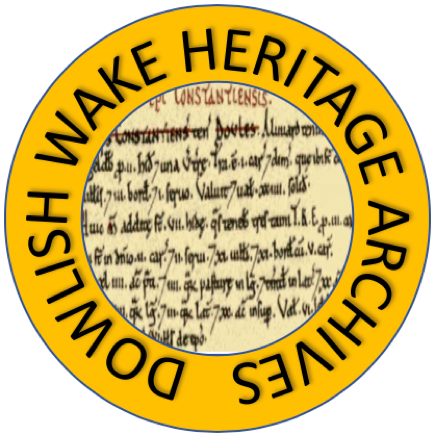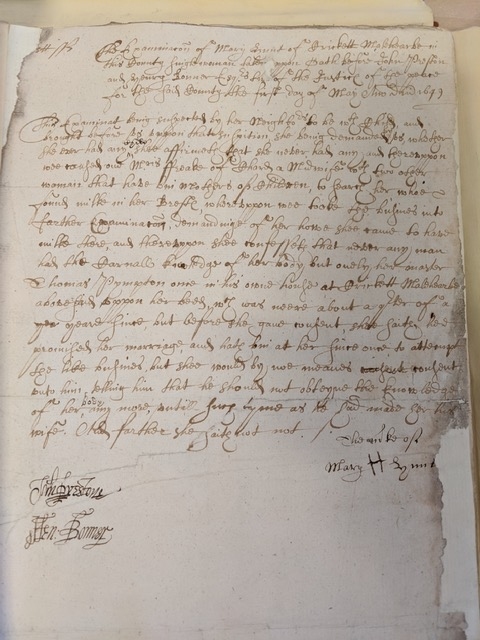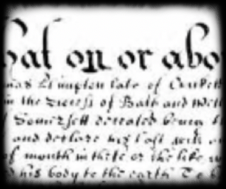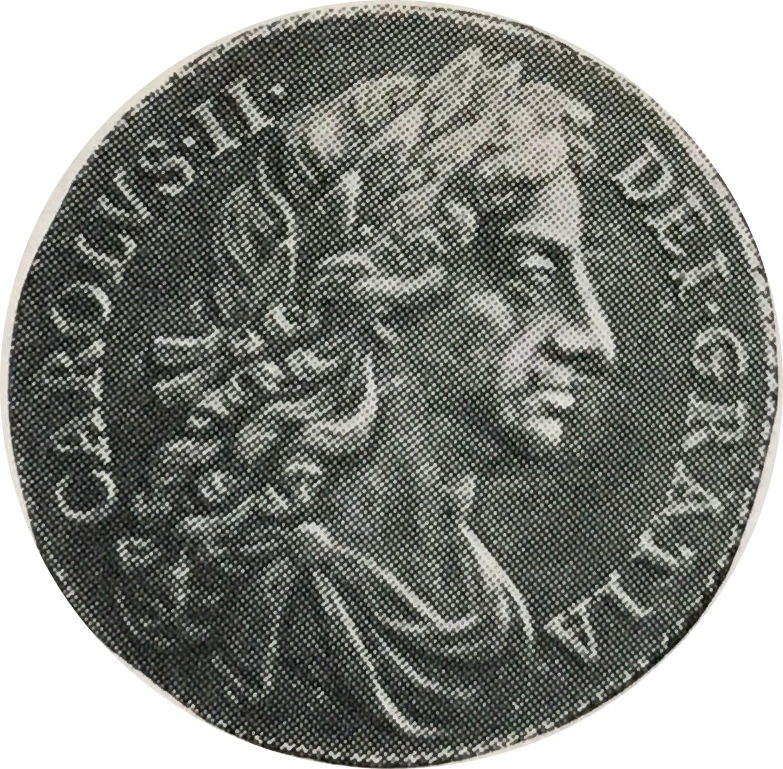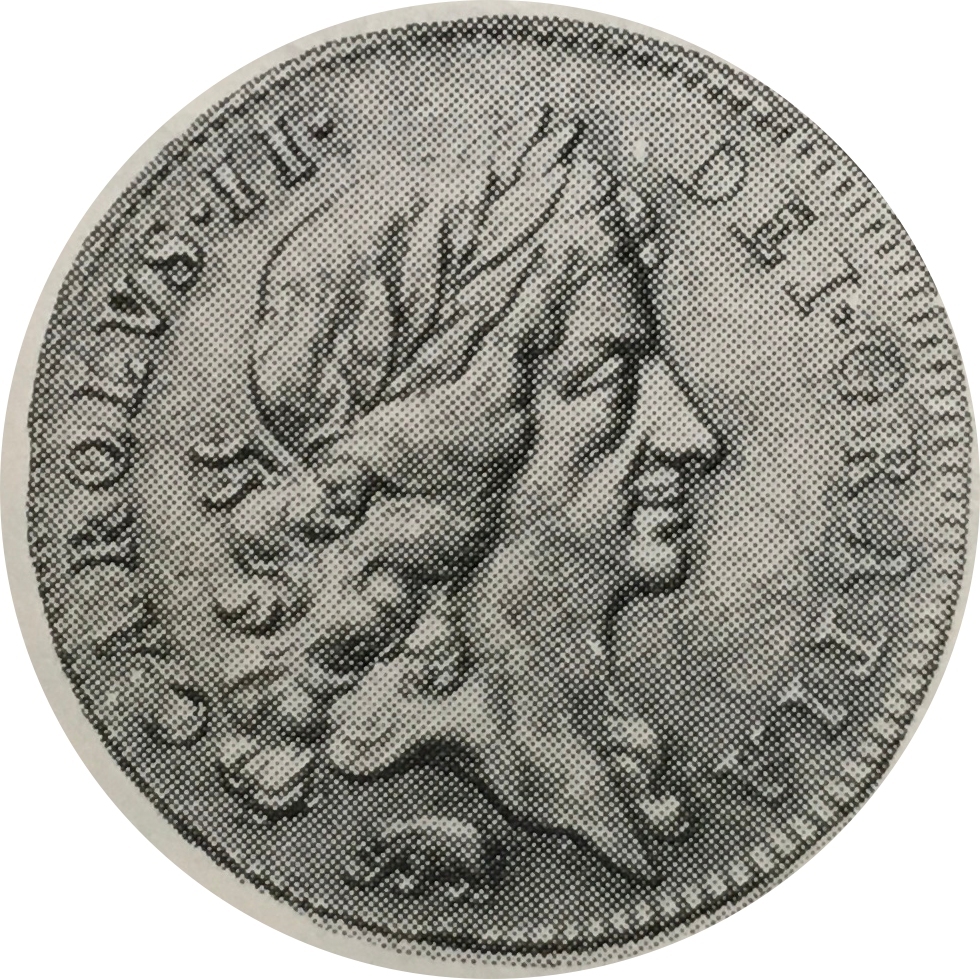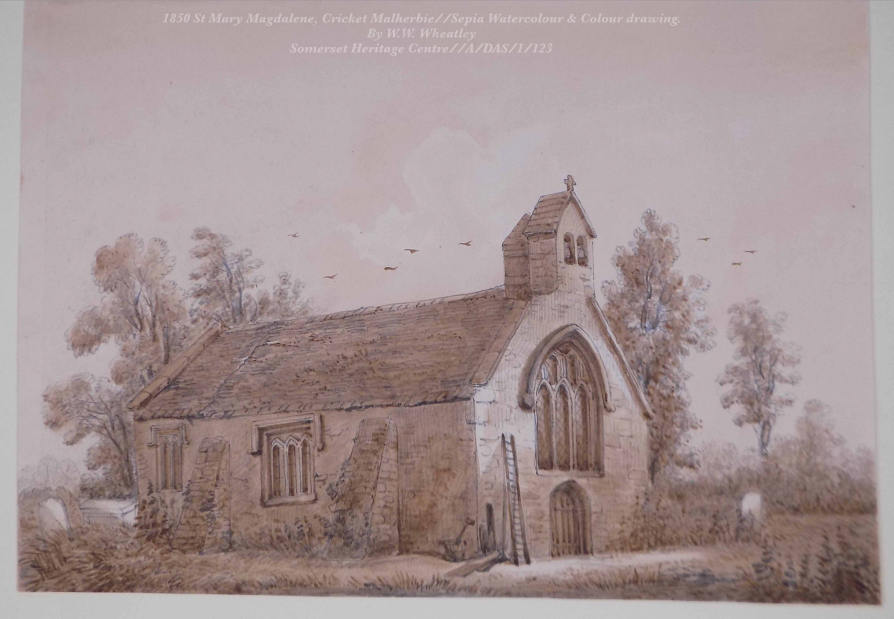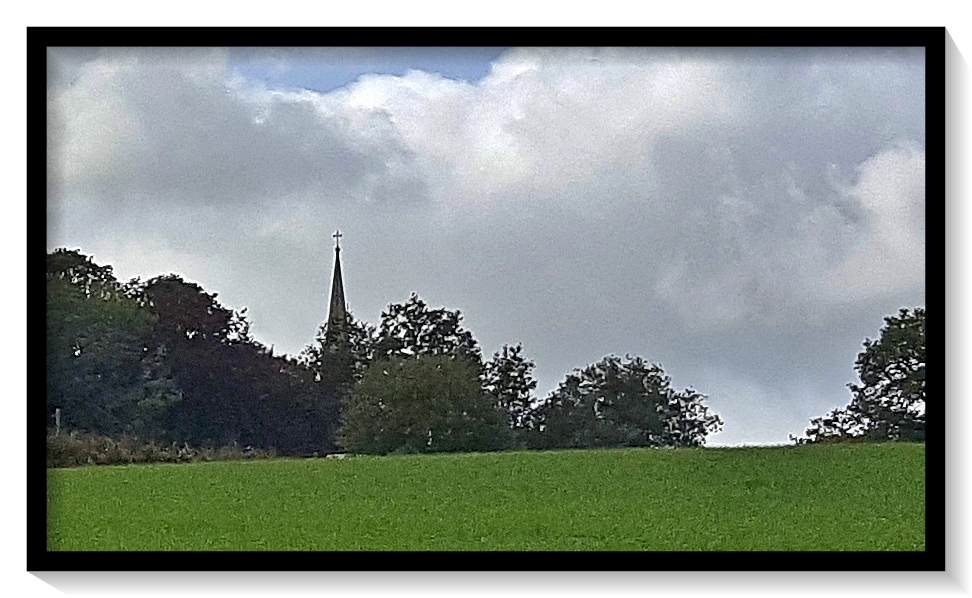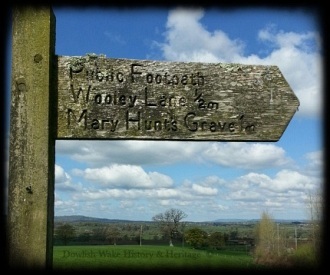Mary Hunt’s Grave [3]

- Villager Dylan Edgar kindly contributes professional transcriptions of the Examination Record and two Plympton Wills.
- Mary Hunt, unmarried, a concealed pregnancy, a bastardy examination in front of Justices of the Peace in 1649.
- Mary, servant to Thomas Plympton, yeoman of Cricket Malherbie, he, her master, the alleged father.
Those interested in learning more from old hand-written documents, such as those below, can find doing so considerably difficult. Reading the unreadable becomes a task too far. Thankfully, once again, villager Dylan Edgar has achieved where others have failed. By commissioning a professional transcription of the three related documents, these tell the happenings of the bastardy examination of Mary Hunt. Great skill is required to decipher 340 year-old parish & National Archive records, spidery handwriting, the formation & spelling of words unfamiliar. A process to be learned or for others instinctive.
Please share with us the legal document that made up part of the process preceding Mary Hunt’s death. Then view the Plympton wills, with an excursion into the modern-day context of currency conversion. In part two of this website is the background to the legend of Mary Hunt’s Grave.
Bastardy enquiry, 1649
Somerset Archives and Local Studies
Ref: Q/SR/81/54
The Examination of Mary Hunt of Crickett Malehearbe in this County singlewoman taken uppon Oath before John Preston and Henry Bonner Esquires two of the Justices of the peace for the said County the first day of May Anno domini 1649.
This Examinat being suspected by her Neighbours to be with Child, and brought before us uppon that suspition, she being demanded by us, whether she ever had any Child, shee affirmeth that she never had any and thereuppon wee caused one Mistris Freake of Chard a Midwife with two other woman that have bin Mothers of Children, to search her whoe found milke in her Brestes, whereuppon wee tooke the busines into farther Examinacion, demandinge of her howe shee came to have milke there, and thereuppon shee confesseth that never any man had the Carnall knowledge of her body but onely her master Thomas Pympton once in his owne house at Crickett Malehearbe abovesaid uppon her bedd, which was neere about a quarter of a yeare since, but before she gave consent, shee saith hee promised her marriage, and hath bin at her since once to attempt the like busines, but shee would by noe meanes consent unto him, telling him that he should not obteyne the knowledge of her body any more, untill such tyme as he had made her his wife. And farther she saith not.
The marke of Mary Hunt
John Preston
Henry Bonner
Examination of Mary Hunt: Document - South West Heritage Trust, Taunton Heritage Centre. Q/SR/81/54 - Permission to print for the use of the image. 15.01.2020. 108776-108776
Many thanks to Dylan Edgar for his help and the discovery of the original Examination Document, and to Graeme Edwards, Archivist at Somerset Archives, SW Heritage Trust for permission to include the document.
Will of Thomas Plimpton, 1666
The National Archives, ref: PROB 11/320/405
Memorandum that on or about the second day of March 1665 [1] Thomas Plimpton late of Crickett Maleherb in the County of Somersett and within the Diocess of Bath and Wells and the Deanary of Crewkerne in the County of Somersett deceased being then of sound mind and perfect memory Did make and declare his last will and testament Nuncupative (That is to say) by word of mouth in these or the like words in effect as following Imprimis he Committed his body to the earth To be interred in the Parish Churchyard of Crickett Maleherb aforesaid according to the discretion of his Executor And for all his Estate whatsoever hee gave unto his Father Thomas Plimpton of Crickett Maleherbe aforesaid whome he made sole Executor of his last will and testament which words or the like in effect he uttered and declared in the presence and heareing of diverse credible witnesses
Witnesses hereunto The marke of Robert Memboy The marke of Agnes Tuttier
Summary of probate clause:
The abovewritten nuncupative will was proved in London on the 19 May 1666 on the oath of Thomas Plimpton father of the deceased and executor of the will, to whom administration was granted etc.
[1] 2 March 1666 new style
With thanks to Dylan Edgar for the contribution of transcripts of both wills and his permission to include these documents in this article.

Will of Thomas Plimpton, 1672
The National Archives, ref: PROB 11/339/561
In the name of God Amen I Thomas Plimpton of Crickett Malherbe in the Countie of Sommersett yeoman being of sounde and perfect memorie praised be God doe hereby declare and make this to be my last Will and Testament in manner and forme following First I commend my Soule unto Almightie God my Creatour hopeing through the meritts of Jesus Christ my Saviour to be made pertaker of eternall life and as to my Bodie to be decently buried as my Executrix hereafter named shall thinke fitt Also I give unto the Church of Crickett aforesaid the summe of Fiftie shillings Alsoe I give unto the poore of the said place and parrish of Crickett the like summe of Fiftie shillings Alsoe I give unto my kindsman John Gregorie the summe of Fiftie pounds Alsoe I give unto my said kindsmans Mother the daughter of my brother John Plimpton deceased the like summe of fiftie pounds Alsoe I give unto my servant Ruth Merrimouth the summe of Tenn pounds Also I give unto my servant John Gey the like summe of Tenn pounds Alsoe I give unto Roger Stucky sonne of John Stucky late of Crickett aforesaid deceased the summe of five pounds All the rest of my Goods and chattells I give unto my Wife Iselt Plympton whome I make Executrix of this my last Will and Testament hereby revokeing all former ones In witnes whereof I have hereunto sett my hand and seale the Tenth day of Aprill in the yeare of our Lord One Thousand six hundred seaventie two The marke of Thomas Plympton signed sealed and published in the presence of us William Warden William Marren the marke of John Sansam
Summary of probate clause:
Will proved at London on the 4 July 1674 on the oath of Iselt Plimton widow of the deceased and executrix of the will, to whom administration was granted etc.
With thanks to Dylan Edgar for the contribution of transcripts of both wills and his permission to include these documents in this article.
Notes
Bastardy Examinations
Examinations were, at this time in history, conducted before two Justices of the Peace. Seeking our circumstantial evidence, where a woman might have given birth to a bastard child, and how she had become pregnant. It seems the reason being more economic than moral. Identification of the father important, he to provide for her and a child. Otherwise she might become chargeable on the parish purse.
Thomas Plimpton / Plumpton / Plympton.
Little is known of the Plympton residence within Cricket Malherbie. Records of Cricket Malherbie show, a son and father both named Thomas Plympton, both buried in the older 12th century church of St Mary Magdalene, Cricket Malherbie. There is a son Nicholas born to a Thomas & Ann Plimpton, christened in March 28th in 1637. This christening too, taking place at St Mary Magdalene, Cricket Malherbie.
Currency Converter
Thomas Plympton senior, in his will lists his monetary gifts. Using the National Archives Currency Converter we compare coinage values over time.
50 Shillings each to Cricket Church & Poor of the Parish,
This would be worth in the year 2017 = £284.45
In 1670 you could purchase 3 stones of wool or it would equal 35 days of payment for a skilled tradesman.
Silver Shilling 1670s
50 Pounds each to;
‘Kindsman’, John Gregorie [his brother in law], plus the same amount to both his brother-in laws mother and his niece, daughter of his deceased brother John Plimpton.
In the year 2017 worth = £5,688.93
In 1670, you could purchase one of the following;
7 Horses
9 Cows
Wool – 62 stones
Wheat – 13 quarters
Wages of a skilled tradesman = 714 days.
Gold Guinea [Pound] 1660s
10 Pounds each to his servants, Ruth Merrimouth & John Gey;
Worth in the year 2017 = £1,137.79
In 1670- you could purchase one of the following:
1 Horse
1 Cow
Wool – 12 stones
Wheat – 2 quarters
Wages of a skilled tradesman =142 days
5 Pounds to Rodger Stucky, son of John Stucky, deceased;
Worth in the year 2017 = £568.89
In 1670- you could purchase one of the following:
0 Horse
0 Cow
Wool – 6 stones
Wheat – 1 quarter
Wages of a skilled tradesman=71 days
Online currency converter – comparison of purchasing and earning. In 1663 the first coins had been minted, produced by a machine to replace manually hammering of coin blanks between two dies or casting coins from dies. [nationalarchives.gov.uk, reading old documents, currency converter, 1270-2017]
St Mary Magdalene – Cricket Malherbie.
Mary's grave at Oxenford crossroads.
The Plympton’s the village churchyard.
The church back then a 12th-century church. We are indebted to Somerset artist, William Walter Wheatley [1808-1885] landscape and antiquarian artist. His 1850 drawing of the old church at Cricket Malherbie is delightful. We know little of his life but are told he possessed a tame cuckoo!
In 1851 William Wheatley was living in ‘Poor House lane’ in the village of Road [Rode] near Frome.
“ He was a prolific sketcher and water-colour painter, particularly of churches”
He was commissioned by G. W. Braikenridge to illustrate Collinson’s, ‘History of Somerset’. This collection and other local works by Wheatley can be seen at Taunton, Somerset Archives and Local Studies centre in the SANHS collection.
The new church build on the site of the former, was consecrated in 1852 by the Lord Bishop of the Diocese and thirty of the neighbouring clergy. The Western Flying Post, Sherbourne Mercury and Yeovil Times reported in October of that year;
“Magnificent little Parish Church.” “The stone masonry, in particular, is highly valued by persons of taste and received the greatest commendation for the masterly manner in which it was executed”.
The church was designed by Rev James Mountford Allen, curate of the church. It was reported that he carried out many such architecture projects on not only churches but also schools, vicarages and gentlemen’s residences. Born in 1809, his father was headmaster of Crewkerne and Ilminster Grammar schools. There is an account of his father’s [Rev. John Allen] time at Ilminster Grammar School in 1822;
“In 1822, the newly appointed Allen, as headmaster, was shocked because his boys were leap-frogging over the graves in the churchyard, asked that a playground be rented”.
Biography of Rev. James Mountford Allen:
“The little church at Cricket Malherbie, near Ilminster, is much admired, and the re-dos at Chardstock well known and have been reproduced in other churches in the neighbourhood”.
Cricket Court & Pitt Family.
The church was completed in 1855 at a cost of £4.500. Built at the sole expense of Mrs Pitt of Cricket Court/House. We find in the census of 1851 Elizabeth Pitt, a widow aged 63. Husband Stephen deceased [1775-1848]. Records refer to Elizabeth Pitt as Patron of Cricket Malherbie and Lady of the Manor.
Cricket Court had been built in 1811 for Admiral Stephen Pitt. The family and descendants had a long association with Cricket Court and Cricket Malherbie. They were related through cousins to two Prime Ministers, father and son;
William Pitt, the elder,[1708 – 1778] 1st Earl of Chatham.
William Pitt, the younger, [1759-1806]
Wherever poor Mary Hunt was buried, all these years, her legend has survived.
Maybe she was dug up by folk and given a Christian burial, otherwise burial at crossroads, some thought were the next best place, the lanes, likened to a crude cross shape.
The legend lives on !
Further reading and sources:
1850 Image of the previous 12th century Church of St Mary Magdalene at Cricket Malherbie.Somerset Heritage Centre,A/DAS/1/123/1 - swheritage.org.ukSepia watercolour & pencil drawing of Cricket Malherbie Church from the North West by W W Weatley, 1850 [27 x 38cm]
Braikenridge Collection - The G W Braikenridge collection was bequeathed to the Somerset Archaeological and Natural History Society. That collection was in turn deposited at the Taunton, Somerset Archives and Local Studies Centre. [SANHS collection. The online catalogue, lists Barrington Court, Tintinhull mud cottage! Church & Castle Inn Yeovil, Martock Priory, Montacute Priory & churchyard, Donyatt Parkhouse farm. And dozens of Somerset landscapes and buildings.]
Newspaper Archives, Somerset County Herald, Saturday, May 4th, 1946.
Notes and Queries. The British Newspaper Archive – Find my past Subscription website. findmypast.co.uk
The new church; .” The Western Flying Post, Sherbourne Mercury and Yeovil Times, Tuesday, October 19, 1852. Newspaper records -The British Newspaper Archive Findmypast.co.uk online subscription website.
Kelly’s Directory of Somerset [Cricket Malherbie].
James Mountford Allen –1809-1883 Ecclesiastical Architect.
Biography – Dictionary of National Biography, Volumes 1-22 James Mountford Allen. Ancestry.co.uk
W.W.Wheatley – 1851 census, Ancestry.co.uk
Rode Village History, village website; rodevillage.com
Ilminster Grammar School- Headmaster. See oldilminsterians.org.uk
Currency converter – 1270-2017 - The National Archives – nationalarchives.gov.uk
Old coins: The guinea [one pound]was minted around the time of our story of 1670s, named so, due to its content of gold which was obtained from the Guinea region in West Africa. Wikipedia tells us, the first English machine-struck gold coin. As the value of gold increased so did the content value, originally 20 shillings. In time officially fixed at 21 shillings. The name, guinea, surviving only in horse racing and some agricultural uses. Photos; Seaby's Coins of England and The United Kingdom. 12 edition 1973.
Kindsman. Kinsman a member of the same family.
Nuncupatice – declared orally as opposed to in writing.
Photos and short description of modern Cricket Malherbie, See website; https://viewfromsomerset.blogspot.com/2019/09/a-stroll-around-south-somerset-village.html
